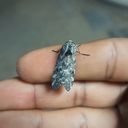Hypercompe
Hypercompe
Classification
- Phylum: Arthropoda
- Subphylum: Hexapoda
- Class: Insecta
- Order: Lepidoptera
- Superfamily: Noctuoidea
- Family: Erebidae
- Subfamily: Arctiinae
- Tribe: Arctiini
- Subtribe: Spilosomina
- Genus: Hypercompe
Pronunciation
How to pronounce Hypercompe: /haɪˈpɜːrkɒmpi/
These audio files are automatically generated. While they are not always 100% accurate, they are a good starting point.
Images






Summary
Hypercompe is a genus of tiger moths in the family Erebidae, established by Jacob Hübner in 1819, with many species widely distributed across the Americas. Adult moths are characterized by their white wings adorned with black spots, while larvae are notably hairy and can exhibit a curling behavior when threatened.
Physical Characteristics
Adults have a thorax and wings that are white with solid or hollow black spots; the body is thick and stout. The abdomen varies in color, often black or blue with orange or yellow markings. Larvae are thick, stout, and covered with long black hairs, typically orange or reddish, usually obscured by hair, and can curl into a ball when disturbed.
Identification Tips
Similar in appearance to Zeuzera. Look for the distinct color patterns and body shapes.
Habitat
Found from southern Canada to southern South America, inhabiting areas where broad-leaved plants grow.
Distribution
North America (7 species) and Central and South America (more than 80 species).
Diet
Larvae feed on leaves of a great variety of broad-leaved plants.
Evolution
Formerly, several species were classified under the genus Ecpantheria, which is now regarded as a junior synonym of Hypercompe.
Similar Taxa
Tags
- Lepidoptera
- Erebidae
- Tiger Moths
- Hypercompe